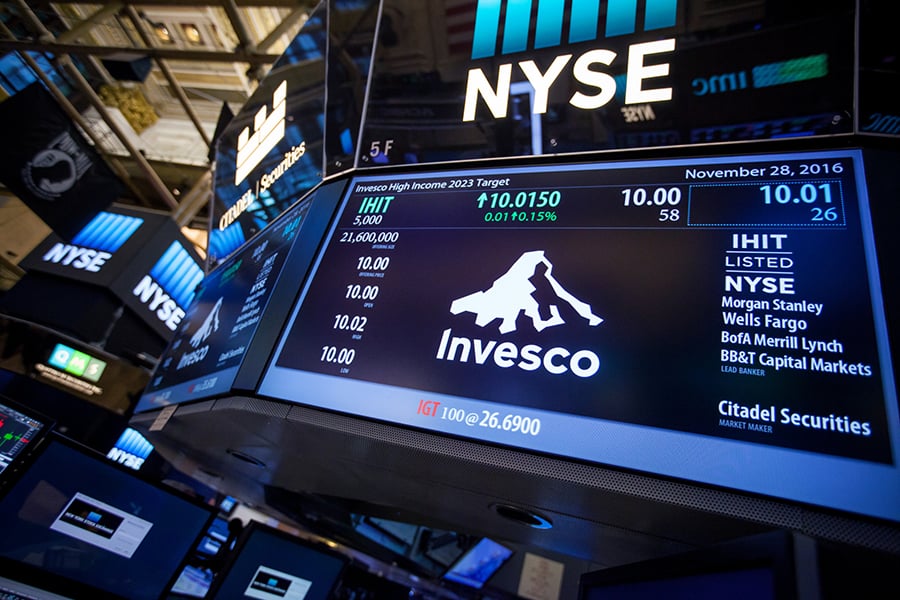

The quant revolution in fixed income is here at long last, if the latest Invesco Ltd. poll is anything to go by.
With the work-from-home era fueling a boom in electronic trading, the majority of investors in a $31 trillion community say they now deploy factor strategies in bond portfolios.
It’s the latest evidence the systematic crowd are running wild in a market long seen as hostile to their allocation methods. The strategies have been put into practice by 55% of respondents compared with 40% last year.
Conviction has been rising in recent years that slicing bonds by factors like value and price momentum provides a way to outperform traditional investing styles. After a decade-long debt rally drove yields to almost nothing, Wall Street is more receptive to the pitch than ever.
In the exchange-traded fund market, smart-beta bond products — those that use factors to guide exposure — have drawn $13.5 billion this year, according to data compiled by Bloomberg Intelligence. That’s already a record haul which has lifted total assets to $57 billion.
“The yield spread has been compressed, and when looking at the market information it is difficult to understand what is meaningful,” the Invesco survey cites an unnamed North American institutional investor as saying. “Incorporating factors within our fixed income strategies has helped us find a way to navigate through this period.”
The study, dated as of March, surveyed 241 institutional and wholesale investors that use factors in some way. It found that the most commonly used fixed-income varieties include value, quality and carry. Many money managers also use macro styles such as duration, liquidity and inflation.
Other highlights include:

The leadership changes coming in June, which also include wealth management and digital unit heads, come as the firm pushes to offer more comprehensive services.

Strategist sees relatively little risk of the university losing its tax-exempt status, which could pose opportunity for investors with a "longer time horizon."

As the next generation of investors take their turn, advisors have to strike a fine balance between embracing new technology and building human connections.

IFG works with 550 producing advisors and generates about $325 million in annual revenue, said Dave Fischer, the company's co-founder and chief marketing officer.

Five new RIAs are joining the industry coalition promoting firm-level impact across workforce, client, community and environmental goals.
RIAs face rising regulatory pressure in 2025. Forward-looking firms are responding with embedded technology, not more paperwork.
As inheritances are set to reshape client portfolios and next-gen heirs demand digital-first experiences, firms are retooling their wealth tech stacks and succession models in real time.
